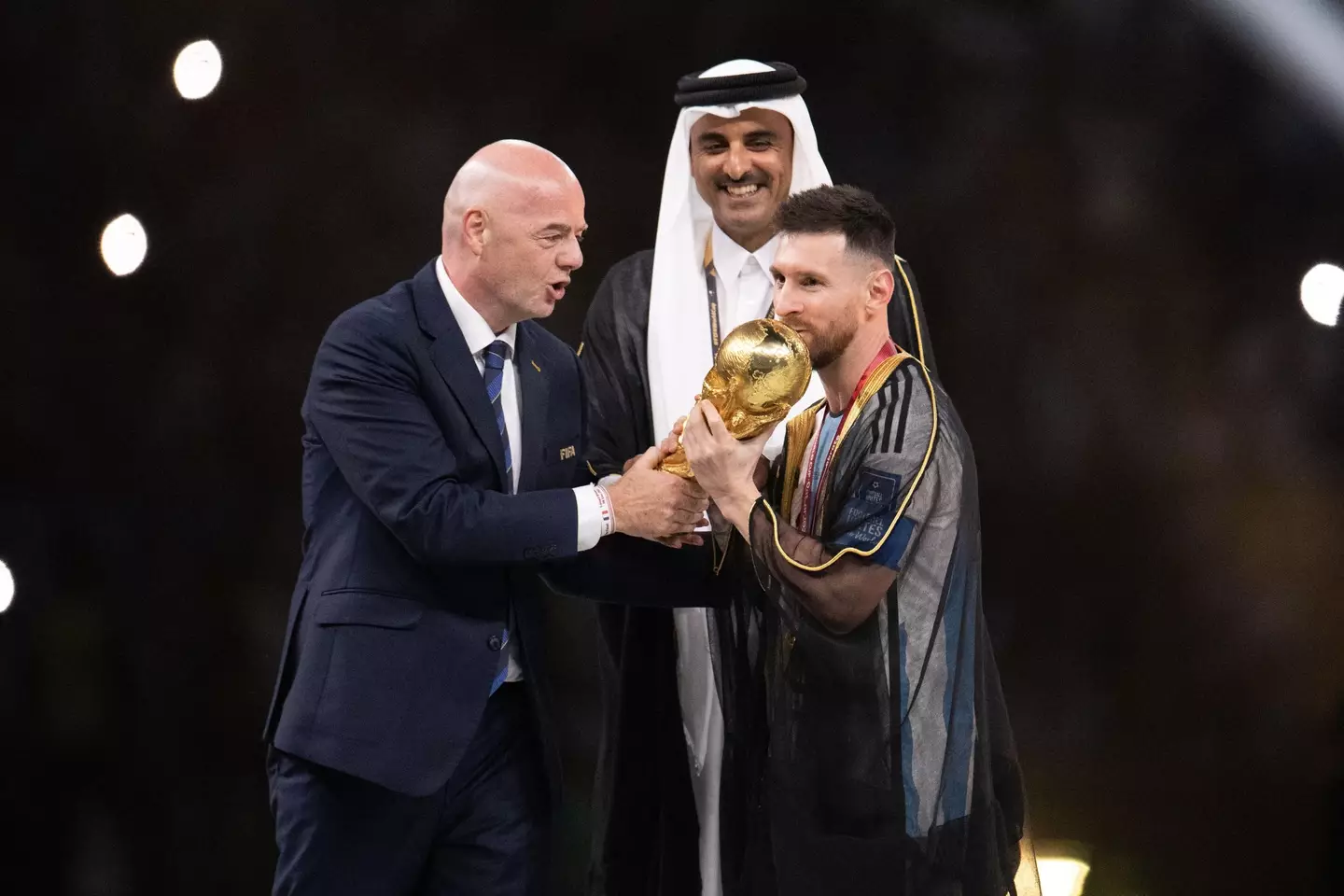

Officials from the FIFA World Cup in Qatar have offered some explanation about why they placed a black see-through cloak onto winning captain Lionel Messi before the trophy lift after last night’s game.
Here’s the scenes in Buenos Aires as Argentina won last night, in case you haven’t already seen:
So, Lionel Messi is finally a World Cup champion, completing the set for a player regarded by most as the best to ever do it.
Advert
Led by their talismanic number 10, Argentina persevered after chucking away a two goal advantage against a Kylian Mbappé inspired France side.
As the penalties came to a conclusion, breath was held all around the globe but frenzied celebrations broke out in Argentina, particularly in the capital city Buenos Aires.
Then, there was nothing left but for the legendary Messi to finally hold the trophy aloft.
However, before that, the officials from Qatar made sure that the diminutive playmaker had a special cloak – known as a bisht – wrapped around his shoulders for the big moment.


Advert
Sheikh Tamim bin Hamad Al Thani – Emir of Qatar - placed the robe on his back just before he had his big moment with the most treasured piece of gold in football.
But many have since asked what the robe was, what the significance of it is, and why they decided to get Messi to wear it.
Well, a bisht is a traditional garment worn for years in the Gulf used for special occasions and often bestowed upon individuals deserving of great respect and status.
It conveys a great appreciation to the wearer and is representative of the national dress of Qatar, though only worn at special times.
This – you’d have to agree – counts as one such time, given that it was arguably the greatest player ever receiving the highest honour in football in unquestionably Qatar’s biggest sporting moment.
Advert
Hassan al-Thawadi, the secretary general of the Qatar World Cup organising committee, explained: “It is a dress for an official occasion and worn for celebrations. This was a celebration of Messi.
“The World Cup had the opportunity to showcase to the world our Arab and Muslim culture. This was not about Qatar, it was a regional celebration.”


Speaking to Al Jazeera, University of Exeter Islamic Studies lecturer Mustafa Baig said: “So only a select few people would actually wear the bisht,
“They basically honoured him [Messi] by putting it over his shoulders.
Advert
“It’s like a mark of honour, and just kind of a cultural welcoming and a cultural acceptance.”
He added: “And this is a top occasion. I mean, there’s probably no bigger occasion, so they put it on him as a mark of honour.”
Topics: World News, Lionel Messi, Football, Sport, World Cup